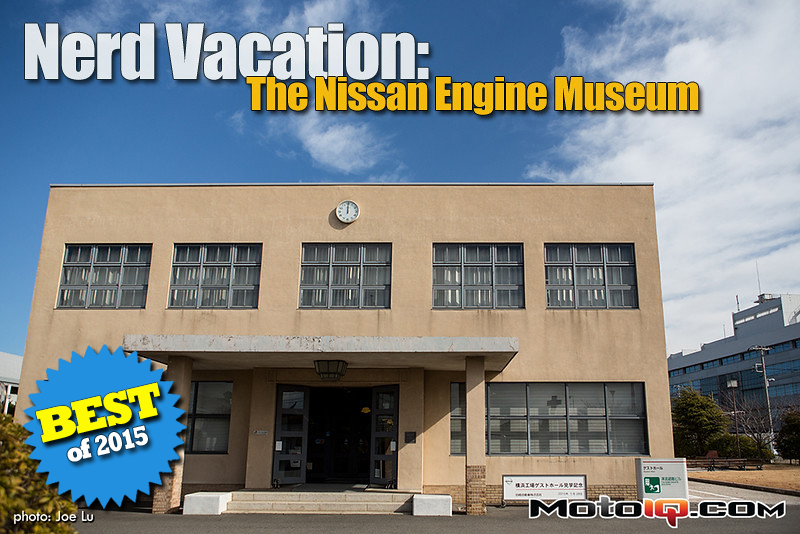,
 Behind plexiglas (and mounted on a wall) were engine parts from another Type 7 engine..
Behind plexiglas (and mounted on a wall) were engine parts from another Type 7 engine.. Pretty cool to see the internals of this early engine displayed so neatly…
Pretty cool to see the internals of this early engine displayed so neatly… Check out the size of the flywheel. It's difficult to tell the scale in a photo, but this thing was literally the size of a small plate..
Check out the size of the flywheel. It's difficult to tell the scale in a photo, but this thing was literally the size of a small plate.. As you can see, these are some pretty old engine components. Asides from being tiny, the pistons reek of early automotive design with their full coffee can like skirts, large ring groove axials, and the method in which their wrist pins are retained. The wrist pins appear to be laterally secured with “buttons,” which are placed on each side of the wrist pin. Except for some bespoke drag racing applications, most pistons use a press fit pin or wire locks to retain their wrist pins. Early crankshafts looked a bit different as well; with no counterweights to be found, these old engines were probably prone to a fair amount of vibration. It's doubtful that this engine even saw half the RPM that today's modern engine's see. The lack of a radius in the transition between the connecting rod's beam and the big end don't necessarily convey confidence for high RPM use either. It's times like this where I have to take a moment and appreciate how far we've come in our engine design.
As you can see, these are some pretty old engine components. Asides from being tiny, the pistons reek of early automotive design with their full coffee can like skirts, large ring groove axials, and the method in which their wrist pins are retained. The wrist pins appear to be laterally secured with “buttons,” which are placed on each side of the wrist pin. Except for some bespoke drag racing applications, most pistons use a press fit pin or wire locks to retain their wrist pins. Early crankshafts looked a bit different as well; with no counterweights to be found, these old engines were probably prone to a fair amount of vibration. It's doubtful that this engine even saw half the RPM that today's modern engine's see. The lack of a radius in the transition between the connecting rod's beam and the big end don't necessarily convey confidence for high RPM use either. It's times like this where I have to take a moment and appreciate how far we've come in our engine design.  And here we have an assembled “Type 7” engine, which in person was comparable to the size of a modern in-line 3-cylinder engine.
And here we have an assembled “Type 7” engine, which in person was comparable to the size of a modern in-line 3-cylinder engine. Compact efficiency has always been a theme for Nissan. Here we are looking at a comparison of an Austin engine rod and piston (right) next to a Nissan engine rod and piston (left), both from the 30's. For comparison's sake, the Nissan assembly weighs in at 311 grams, slightly less than a third of what the Austin assembly weighs.
Compact efficiency has always been a theme for Nissan. Here we are looking at a comparison of an Austin engine rod and piston (right) next to a Nissan engine rod and piston (left), both from the 30's. For comparison's sake, the Nissan assembly weighs in at 311 grams, slightly less than a third of what the Austin assembly weighs. 


